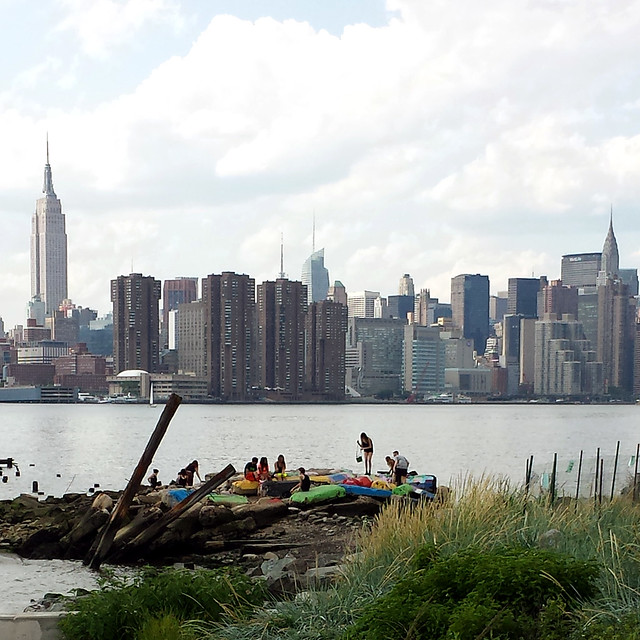CLOG: RemCLOG, 2014
Paperback, 184 pages

[Front Cover]
CLOG started its now successful publication run back in 2011 with an issue devoted to one architect,
Bjarke Ingels. Since then the quarterly journal has focused issues on building types (prisons, data space), places (Miami, National Mall), and ideas (sci-fi, unpublished, brutalism). Their most successful is clearly
Apple, which, like the first issue, is as much about a man – Steve Jobs – as about the firm/company behind him. With its second issue of 2014,
CLOG returns to a single-person topic with
Rem (Koolhaas), about the OMA honcho who is directing the Venice Architecture Biennale on display until November. The timing is hardly a coincidence, witnessed by the issue's
launch party outside Bruno Books in Venice on the evening of the Biennale's opening.

[
CLOG: Rem launch party in Venice on June 7, 2014 | Photograph by John Hill]
Instead of an editorial introduction, the issue starts with, of all things, an excerpt from
Wikipedia's entry on Rem Koolhaas. This tactic puts the "facts" ahead of the myths, but the numerous short essays, interviews, essays, and 3-foot-long foldout timeline/authorship chart that follow can be seen as ways of dismantling the myths of Rem Koolhaas and OMA. Rem's mythical status can be grasped pretty clearly in Klaus's contribution that immediately follows the Wikipedia entry. A blend of Barack Obama's "Hope"poster and Kubrick's
2001, Rem is a figure of worship by some confused and hysterical monkeys (CAD monkeys?) surrounding the monolith.

["
It's Not Easy Being Kool" by Klaus]
The many contributions that follow in this XL issue of
CLOG veer from the humorous to the serious, but most tend toward the latter. The most insightful pieces are by architects who worked at OMA (Matthias Holwich and Philipp Oswalt, Erez Ella, Galia Solomonoff, Winy Maas and Jacob van Rijs, etc.), some of which make up the numerous interviews included in the issue. (A "Declined to Comment" page at the back of the issue lists the various collaborators and ex-OMAers, including the duo at WORKac, Iwan Baan, Jeanne Gang, and Joshua Prince-Ramus, that did such.) Their contributions go farthest toward breaking down the myths of Rem, by foregrounding the day-to-day interactions (what little of them occurred) with his employees.

[Back Cover]
If the interviews were taken out of the issue,
Rem would approach "M" rather than "XL." Although they are illuminating (particularly the ones with Madelon Vriesendorp and Zoe Zenghelis, Stephen Cassell, and Tomas Koolhaas), the interviews signal a shift away from
CLOG's 500-word, two-page-spread format, and toward a hybrid format where external contributions are balanced by some hefty editorial content. Here they are justified, but I'll admit they distract from the short pieces, many of which cannot hold their own with the interviews. Taking all of the pieces into account, the issue paints a varied picture of Rem Koolhaas based on interactions with the architect/writer, the contributor's conceptions of his buildings/writings, and different ways of breaking through the myths to get at the content beneath.


































